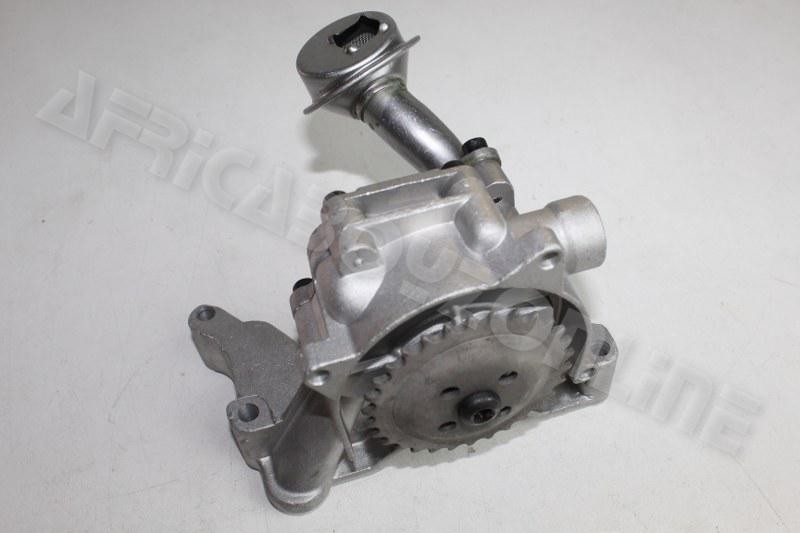Invest in a durable clp engine for better efficiency.
Invest in a durable clp engine for better efficiency.
Blog Article
Exactly How a Clp Engine Can Improve Effectiveness in Various Industries
The arrival of CLP engines notes a significant shift in operational effectiveness throughout numerous sectors, driven by their capability to optimize gas consumption and reduce downtime. As organizations progressively focus on sustainability along with performance, the role of CLP engines becomes even extra critical.
Review of CLP Engines
CLP engines, or Continual Liquid Propellant engines, represent a significant innovation in propulsion modern technology, particularly for space applications. These engines make use of a continual feed system that enables the sustained expulsion of propellant, bring about improved efficiency and efficiency contrasted to traditional strong or hybrid propulsion systems. By keeping a consistent circulation of fluid propellant, CLP engines can achieve more specific drive control, which is important for navigating spacecraft in different mission situations.
The design of CLP engines incorporates advanced products and ingenious gas administration systems. clp engine. This results in reduced weight and raised dependability, essential variables for long-duration space goals. The continuous procedure minimizes the danger of burning instability, a common challenge in traditional rocket engines.

Benefits in Production
The production of Continual Fluid Propellant (CLP) engines provides several noteworthy advantages that boost both performance and cost-effectiveness. Among the primary benefits is the streamlined manufacturing procedure, which decreases the complexity connected with typical propulsion systems. By making use of fluid propellant, producers can achieve higher precision in engine performance, leading to maximized power outcome and reduced waste.
In addition, CLP engines assist in a higher degree of modularity, enabling easier assimilation into various production lines. This versatility can significantly decrease lead times and enhance general operational adaptability. Making use of CLP technology additionally has a tendency to minimize the demand for substantial maintenance due to less moving components, which translates right into reduced downtime and functional costs.

Applications in Logistics
Leveraging Constant Liquid Propellant (CLP) engines in logistics provides considerable advantages in operational efficiency and dependability. These engines give a robust service for different transport requirements, allowing the seamless movement of goods throughout vast distances. The inherent layout of CLP engines permits for regular power outcome, which equates into smoother and more foreseeable transport timetables.
Among the vital applications of CLP engines in logistics remains in durable freight transportation, where they can drive both ground and weblink airborne cars. Their ability to keep high efficiency under varying tons problems guarantees that distribution timelines are met, thus improving consumer fulfillment. In addition, CLP engines can be incorporated into automated logistics systems, helping with real-time tracking and maximizing path preparation.
Additionally, the toughness of CLP engines minimizes maintenance downtime, enabling logistics companies to optimize their operational capacities. This is particularly beneficial in warehousing procedures, where efficiency in taking care of and carrying goods is important. As logistics remains to advance, the assimilation of CLP engines represents a forward-thinking strategy that not only boosts performance yet also supports the sector's growing demands for integrity and speed.
Effect On Energy Effectiveness
Just How do Continuous Liquid Propellant (CLP) engines boost energy effectiveness in transport? CLP engines make use of a regular flow of fluid gas, optimizing burning procedures and preserving a stable thrust outcome. This layout reduces energy losses related to conventional burning engines, Recommended Reading where gas distribution can vary and lead to inefficiencies.
The continuous operation of CLP engines enables a more effective thermal cycle, leading to greater details impulse compared to conventional engines. clp engine. This equates to reduced gas usage for the very same quantity of job done, significantly reducing operational expenses throughout different transport industries, including air travel and maritime markets
In addition, the capacity of CLP engines to keep optimum efficiency under differing lots problems lowers the demand for frequent acceleration and deceleration, even more enhancing fuel efficiency. Improved power performance not just adds to set you back financial savings yet likewise causes reduce greenhouse gas discharges, lining up with global sustainability goals.
Future Trends and Innovations
Arising innovations in Continual Fluid Propellant (CLP) engine innovation promise to reinvent the landscape of transport effectiveness and sustainability. As industries pivot toward greener choices, CLP engines stand at the leading edge, integrating innovative products and style techniques that improve efficiency while minimizing ecological effect.
One of one of the most appealing trends is the fostering of crossbreed systems that combine CLP engines with renewable resource resources. This synergy can maximize gas consumption and lower discharges, straightening with global sustainability objectives. Furthermore, advancements in computational liquid dynamics (CFD) are helping with the layout of more aerodynamically efficient engines, causing decreased drag and boosted fuel performance.
Moreover, the development of wise surveillance systems is set to boost operational effectiveness. These systems leverage information analytics and IoT innovation to maximize engine performance in real-time, making sure that the engines operate within their most reliable criteria.
As study remains to explore alternate propellant formulations-- such as biofuels and synthetic fuels-- the future of CLP engines looks promising. By using these innovations, sectors can not only boost their efficiency but likewise add considerably to a cleaner, much more lasting future in transport.
Conclusion
In final thought, CLP engines represent a considerable improvement in effectiveness throughout numerous useful content markets. The assimilation of advanced materials and fewer relocating components reduces upkeep requirements, while positioning with sustainability objectives placements CLP engines as a critical modern technology for the future.
Report this page